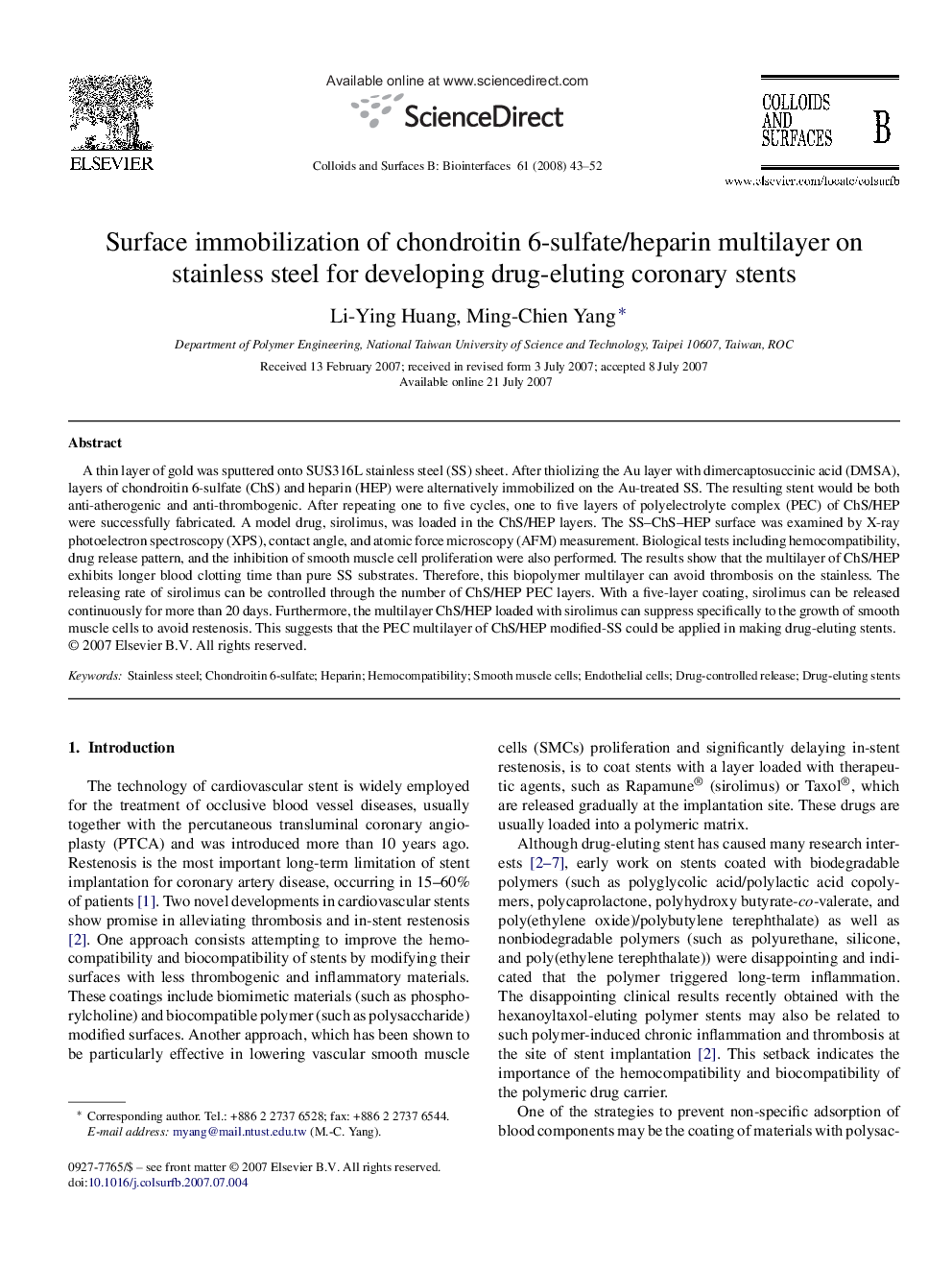| Article ID | Journal | Published Year | Pages | File Type |
|---|---|---|---|---|
| 602395 | Colloids and Surfaces B: Biointerfaces | 2008 | 10 Pages |
A thin layer of gold was sputtered onto SUS316L stainless steel (SS) sheet. After thiolizing the Au layer with dimercaptosuccinic acid (DMSA), layers of chondroitin 6-sulfate (ChS) and heparin (HEP) were alternatively immobilized on the Au-treated SS. The resulting stent would be both anti-atherogenic and anti-thrombogenic. After repeating one to five cycles, one to five layers of polyelectrolyte complex (PEC) of ChS/HEP were successfully fabricated. A model drug, sirolimus, was loaded in the ChS/HEP layers. The SS–ChS–HEP surface was examined by X-ray photoelectron spectroscopy (XPS), contact angle, and atomic force microscopy (AFM) measurement. Biological tests including hemocompatibility, drug release pattern, and the inhibition of smooth muscle cell proliferation were also performed. The results show that the multilayer of ChS/HEP exhibits longer blood clotting time than pure SS substrates. Therefore, this biopolymer multilayer can avoid thrombosis on the stainless. The releasing rate of sirolimus can be controlled through the number of ChS/HEP PEC layers. With a five-layer coating, sirolimus can be released continuously for more than 20 days. Furthermore, the multilayer ChS/HEP loaded with sirolimus can suppress specifically to the growth of smooth muscle cells to avoid restenosis. This suggests that the PEC multilayer of ChS/HEP modified-SS could be applied in making drug-eluting stents.
